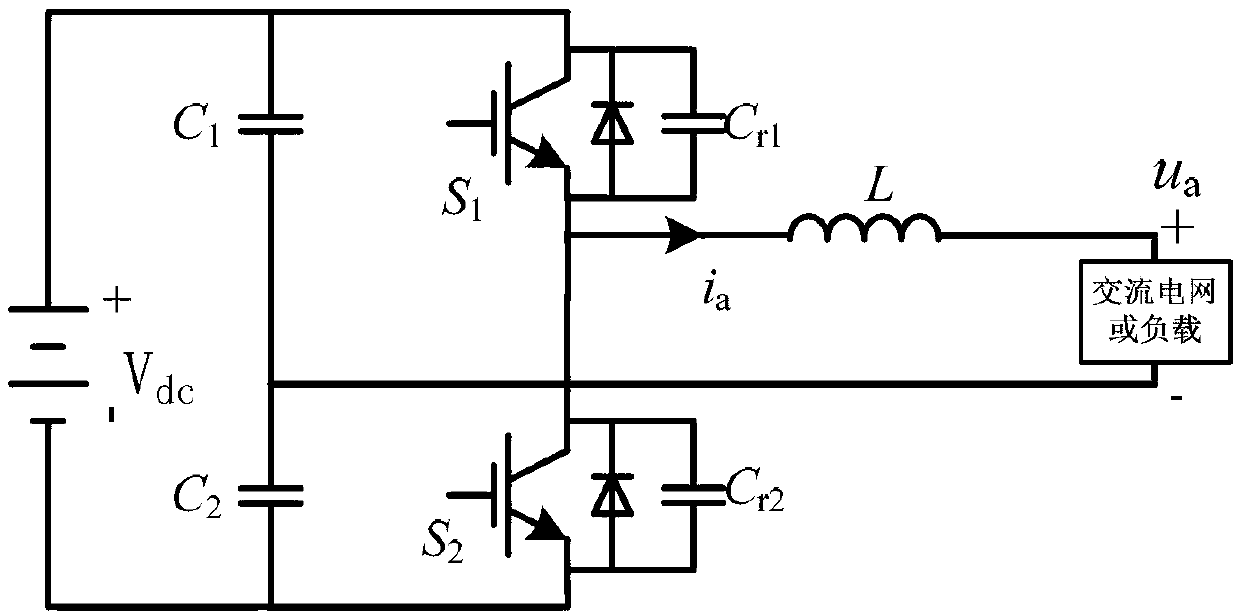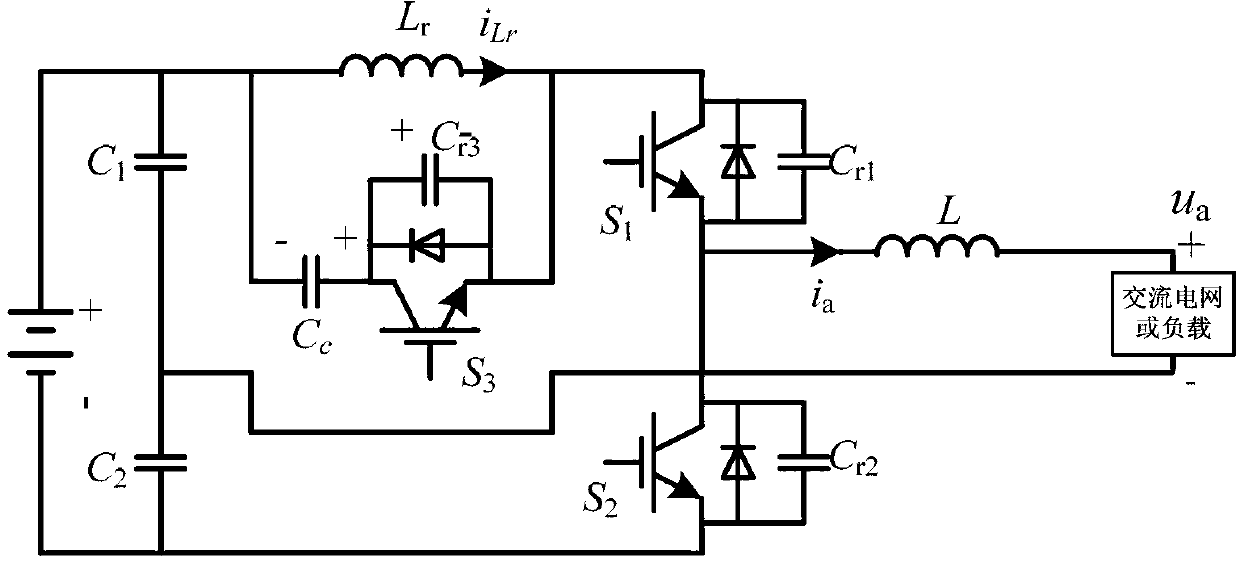Energy-storage half-bridge type inverter of low-additional-voltage zero-voltage switch and modulating method
A technology of zero-voltage switching and additional voltage, which is applied in the direction of high-efficiency power electronic conversion, conversion of irreversible DC power input to AC power output, and climate sustainability. Frequency and other issues, to achieve the effect of increasing power density, improving circuit efficiency, and increasing operating frequency
- Summary
- Abstract
- Description
- Claims
- Application Information
AI Technical Summary
Problems solved by technology
Method used
Image
Examples
Embodiment Construction
[0024] The present invention will be described in detail below in conjunction with specific embodiments. The following examples will help those skilled in the art to further understand the present invention, but do not limit the present invention in any form. It should be noted that those skilled in the art can make several modifications and improvements without departing from the concept of the present invention. These all belong to the protection scope of the present invention.
[0025] refer to figure 2 , the low additional voltage stress zero-voltage switch battery energy storage half-bridge inverter of the present invention includes a DC side battery, a DC side voltage dividing capacitor C 1 ~C 2 , by two fully controlled main switches S with anti-parallel diodes 1 ~S 2 The single-phase bridge arm is connected to the output filter inductance L between the midpoint of the bridge arm and the AC grid or AC load, where: the two main switches S of the single-phase bridge...
PUM
 Login to View More
Login to View More Abstract
Description
Claims
Application Information
 Login to View More
Login to View More - R&D
- Intellectual Property
- Life Sciences
- Materials
- Tech Scout
- Unparalleled Data Quality
- Higher Quality Content
- 60% Fewer Hallucinations
Browse by: Latest US Patents, China's latest patents, Technical Efficacy Thesaurus, Application Domain, Technology Topic, Popular Technical Reports.
© 2025 PatSnap. All rights reserved.Legal|Privacy policy|Modern Slavery Act Transparency Statement|Sitemap|About US| Contact US: help@patsnap.com



